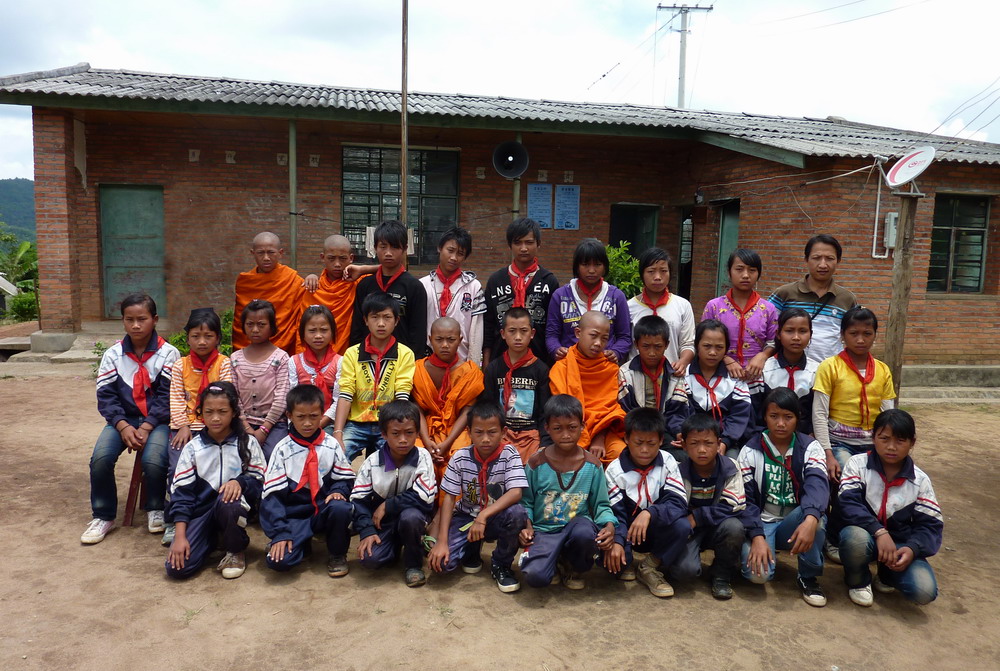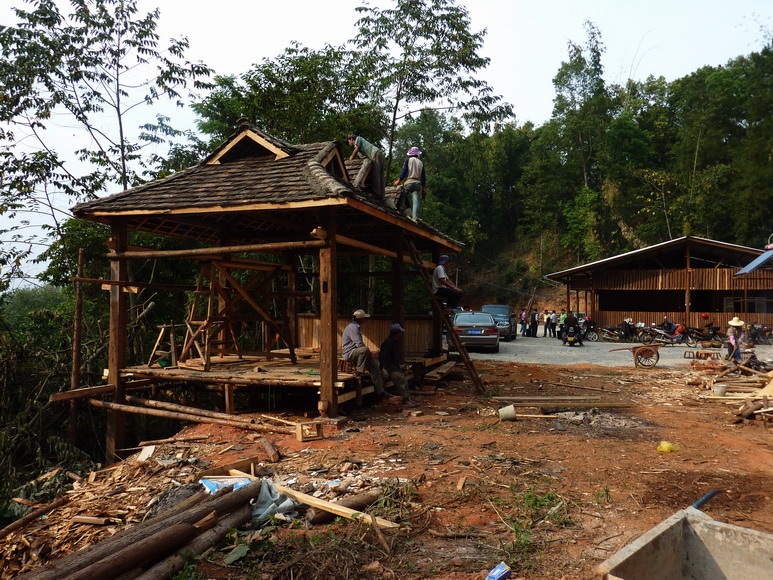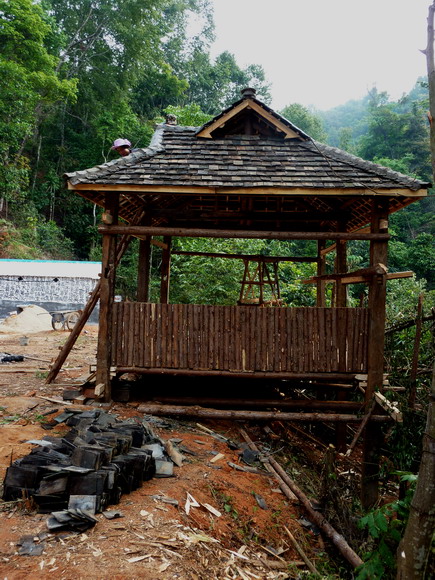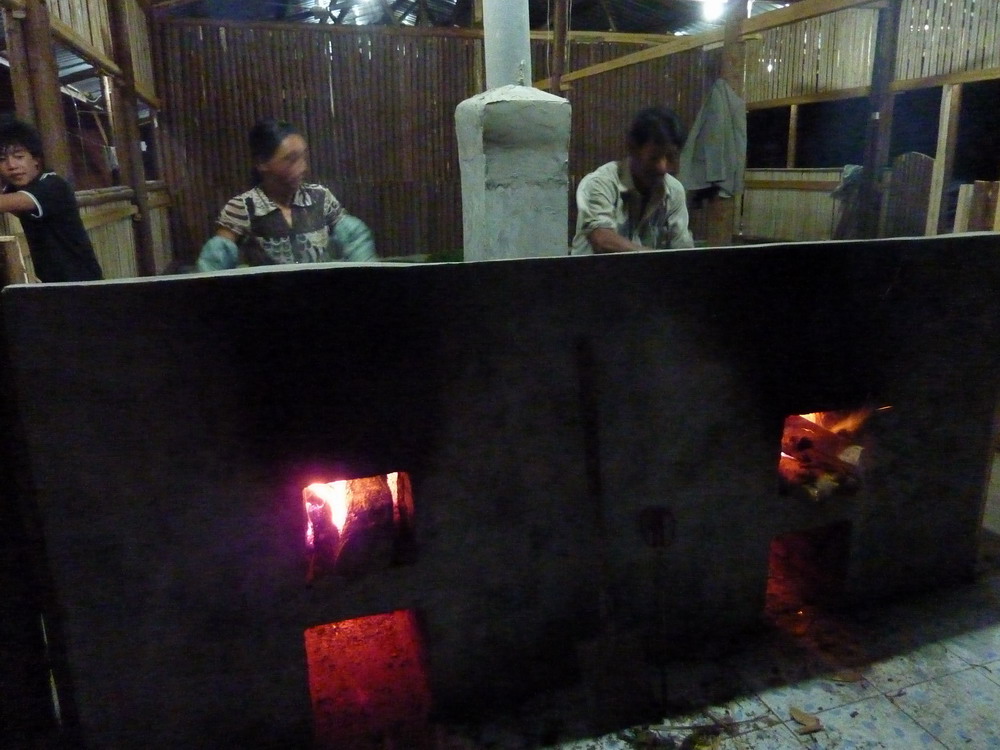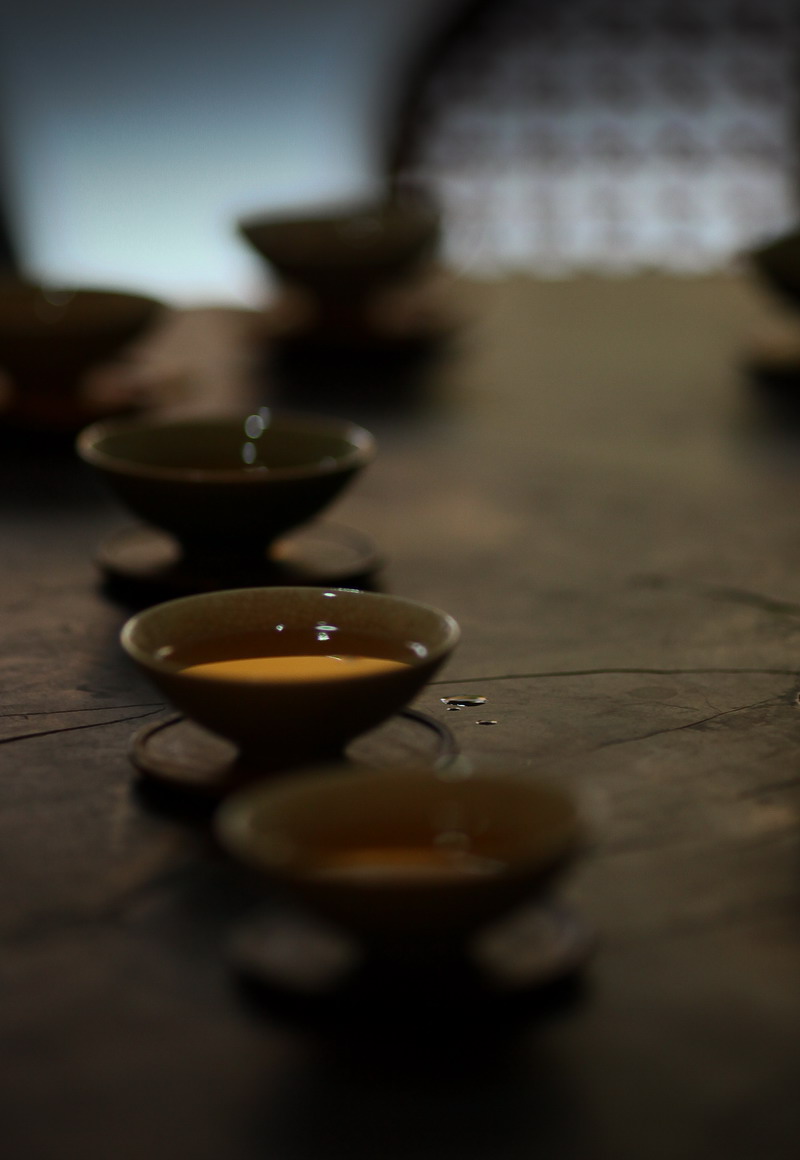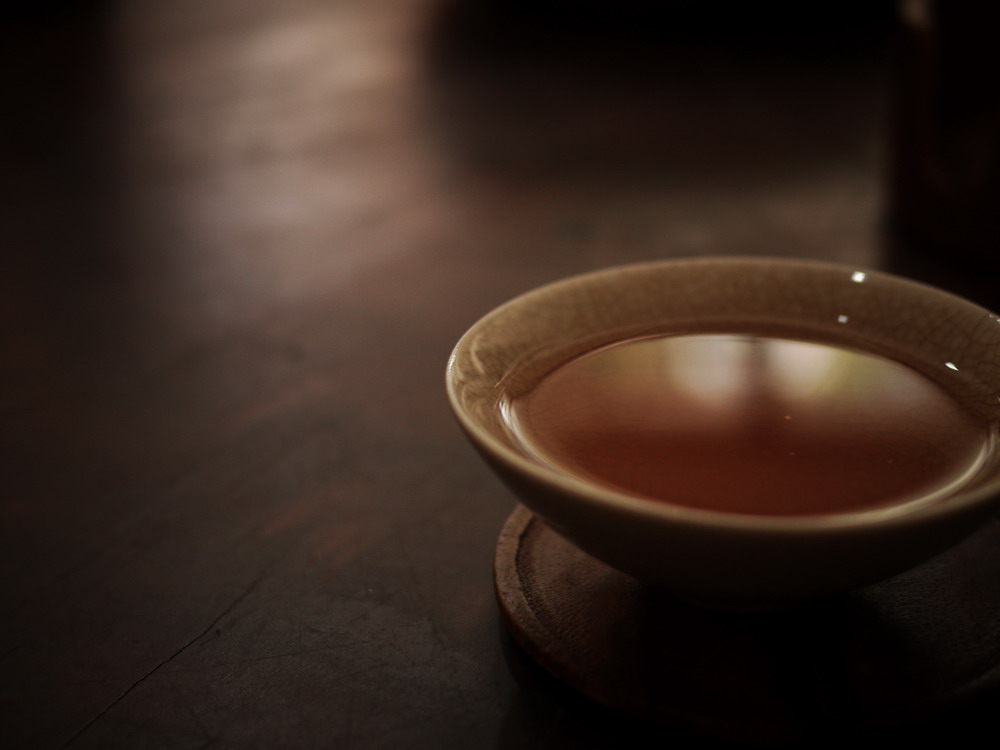I went back out to Manguo Xin Zhai A couple of weeks ago – it was Children’s Day. Next year some of these students will graduate and go to Bulang Shan County or Menghai for middle school. As this is not an old village, there is no long history of children graduating from the village school and progressing to middle and high schools. The teachers aspirations are that children will be successful in moving on to other schools and that the value of education will be appreciated more and more. I had lunch with the teachers and the village head, who gave me a bag of tea as I left. I had taken a few things for the classroom – pens, paper, crayons, colouring pens, etc.
shuo bu qing chu – cant say for sure
Peng Zhe is head of the Xishuangbanna Tea Association. He was also, till last year, head of the Xishuangbanna Tea Bureau, a post he stepped down from. He is a mine of information on Puer tea and very wise. A man of few words.
Recently, talking over lunch, which of course centred around tea he said “The great thing about sheng cha is you can’t say anything for sure.”
Where’s it from? – Part 4
Despite a number of friends coming round several times to taste the tea and HM making a trip around Man Nuo and Pasha to see if we could identify where this tea actually comes from – everyone agrees it’s excellent – we still haven’t nailed it down. On the way, we did come across some very nice tea from Man Nuo though.
In the meantime, a customer who has tasted a sample of the tea, has offered to put up enough funds for us to be able to think about buying it!
We’re now waiting for more samples of the tea to arrive – maybe tonight, so we can see if it really is as the seller says….
Where's it from? – Part 3
Someone we don’t know brought a tea sample into the shop. It’s a fantastic tea; an amazing fragrance, a full bodied flavour, enough bitterness to give it some backbone without being out of kilter, and a great huigan. But he won’t say where it’s from. We feel like it could be Meng Song or Pasha. Otherwise it seems like it could be a tea from Lincang; Bingdao area, but not bingdao itself.
The other problem is that he says he has 500 kilos of it – kind of hard to believe – but maybe. ” You can try any sample of it you like – it’s all the same.” he says. We of course are willing to try. But we still have not faced the main hurdle; he doesn’t want to sell it in smaller quantities. He wants to sell it all together. The whole 500 kilos. And at his asking price – 1600 Yuan a kilo – it would break the bank since we’ve already bought a fair bit of tea this spring.
In the meantime, we’re very happy to sit over our sample, drink it with friends, and mull over the possibilities…..
Open House
We held a qing ke (open house) last weekend, but building work continues on a gazebo. It’s made from some timber and roof tiles from an old Dai house, supplemented with the remaining pine from the main building construction. It’s going to be a place to hang out and drink tea.
Built in the manner of a local Dai building rather than a Han style pagoda, there are some nominal similarities in design style between the two. Tiles like these are made by Dai people outside nearby Menghun. The village nearby is also renowned for hand-made paper.
The roof superstructure needs to be more substantial to support the tiles.
The toilet block replete with words of wisdom by friends from Suzhou. “It’s too white.” they said. “bu hao kan!”
A view from the road above the site. The white roof can just be seen through the trees.
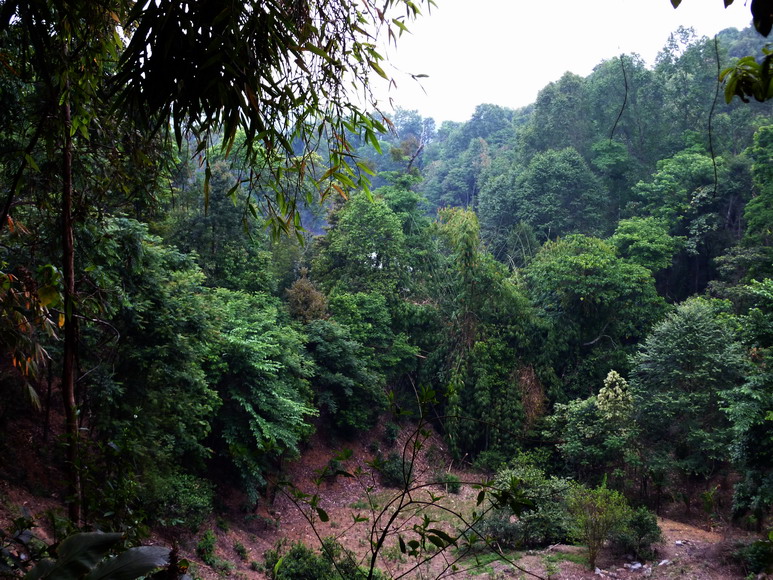
Nan Nuo Shan
The place in Nan Nuo Shan is more or less finished; finished enough for us to start making tea up there. HM has been working with local Aini people to complete the building.
Here are a few pictures of tea being made.
Fresh leaves put to wilt. Not all Puer is wilted in this way, depending on the tea, some is roasted almost straight away.
Tea is ‘fried’ after wilting. We have built a set of double pans, each with its own fire but with a common flue.
The flue is slightly tilted to ensure a good draw. The front of the oven is also sloping out slightly so that the person frying tea can stand with their toes against the wall of the oven and gain enough leverage to lean over the wok for maximum reach. There is a distance of about 7-8 cm from the edge of the oven to the rim of the wok – enough to avoid getting burned.
After frying the tea is spread out to cool before rolling.
Summer Rain
It has rained more or less continuously for the last three days. The rain was much needed. Prior to that it hadn’t rained for a long time, with the predictable impact on tea availability and prices. Reports of prices of Shi Tou Zhai bush tea (taidi) selling for 50 Yuan a kilo, Bulang Shan taidi selling for similar amounts. Someone phoned us from Lao Ban Zhang with a small quantity of (reportedly) old tree tea. Somewhat early under the circumstances, but maybe it was true. Unlike the price, which was truly unbelievable; 1,800 Yuan a kilo. They weren’t joking!
Despite the wet weather, building work on our modest place in Nan Nuo Shan continues. See here for more info and pictures
Dry
Yet another dry spring. It rained last night for the first time in ages and it looks like it could rain again any time. We need it. The situation looks even more severe than last year – there is also very little tea, and the price is spiralling – tales of taidi maocha from Bulang Shan selling for 50 yuan a kilo. A friend brought some tea back from Youle, but it wasn’t very promising. And last night someone phoned from Lao Ban Zhang to offer some tea at 1,800 yuan/kilo – it wasn’t a hoax.
A little rain could make a big difference.

